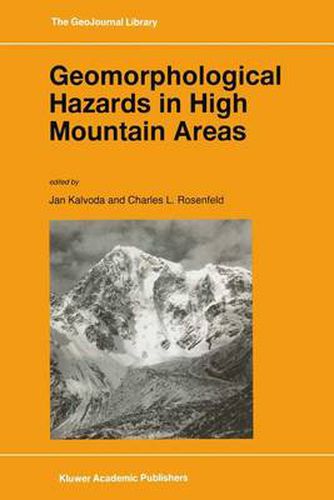Readings Newsletter
Become a Readings Member to make your shopping experience even easier.
Sign in or sign up for free!
You’re not far away from qualifying for FREE standard shipping within Australia
You’ve qualified for FREE standard shipping within Australia
The cart is loading…






This title is printed to order. This book may have been self-published. If so, we cannot guarantee the quality of the content. In the main most books will have gone through the editing process however some may not. We therefore suggest that you be aware of this before ordering this book. If in doubt check either the author or publisher’s details as we are unable to accept any returns unless they are faulty. Please contact us if you have any questions.
On the basis of a total of thirteen case examples from the Tien Shan, Karakorum, Himalaya and Tangula Shan (central Tibet), the risk potential and hazards are inferred from the development of landscape during the Quaternary. The history of glaciers can be seen as of central importance for this. The Ice Age glacial erosion created V-shaped valleys, which with their steep flanks - as a consequence of the interglacial formation of V -valleys - have prepared and brought about landslides as well as rockslides and the hazards, combined with them. The same is true for the moraines, which the gla ciers have deposited high-up in the valley flanks and related loose stone deposits. Dry and wet mass movements follow after heavy precipitation, especially in the semi-arid investigation areas, and are catastrophes for the settlements and the communication routes in the valley floors. Their key-forms are debris cones and debris slopes, as well as mudflows and alluvial fans. In addition to the Ice Age glaciation history, as a preparatory, indirect factor, the Holocene to present glaciation history is, as a result of the danlming-up of glacier- and moraine lakes and their outbursts, a direct risk factor. The examples presented of acute and already occurred cases of damage were inves tigated in the years 1989-1994. Acknowledgements The authors wish to thank the Deutsche Forschungsgemeinschaft (DFG), the Max Planck-Gesellschaft (MPG), the Volkswagen-Stiftting (VW) and the Deutscher Aka demischer Austauschdienst (DAAD) for the financial support for the field-work.
$9.00 standard shipping within Australia
FREE standard shipping within Australia for orders over $100.00
Express & International shipping calculated at checkout
This title is printed to order. This book may have been self-published. If so, we cannot guarantee the quality of the content. In the main most books will have gone through the editing process however some may not. We therefore suggest that you be aware of this before ordering this book. If in doubt check either the author or publisher’s details as we are unable to accept any returns unless they are faulty. Please contact us if you have any questions.
On the basis of a total of thirteen case examples from the Tien Shan, Karakorum, Himalaya and Tangula Shan (central Tibet), the risk potential and hazards are inferred from the development of landscape during the Quaternary. The history of glaciers can be seen as of central importance for this. The Ice Age glacial erosion created V-shaped valleys, which with their steep flanks - as a consequence of the interglacial formation of V -valleys - have prepared and brought about landslides as well as rockslides and the hazards, combined with them. The same is true for the moraines, which the gla ciers have deposited high-up in the valley flanks and related loose stone deposits. Dry and wet mass movements follow after heavy precipitation, especially in the semi-arid investigation areas, and are catastrophes for the settlements and the communication routes in the valley floors. Their key-forms are debris cones and debris slopes, as well as mudflows and alluvial fans. In addition to the Ice Age glaciation history, as a preparatory, indirect factor, the Holocene to present glaciation history is, as a result of the danlming-up of glacier- and moraine lakes and their outbursts, a direct risk factor. The examples presented of acute and already occurred cases of damage were inves tigated in the years 1989-1994. Acknowledgements The authors wish to thank the Deutsche Forschungsgemeinschaft (DFG), the Max Planck-Gesellschaft (MPG), the Volkswagen-Stiftting (VW) and the Deutscher Aka demischer Austauschdienst (DAAD) for the financial support for the field-work.